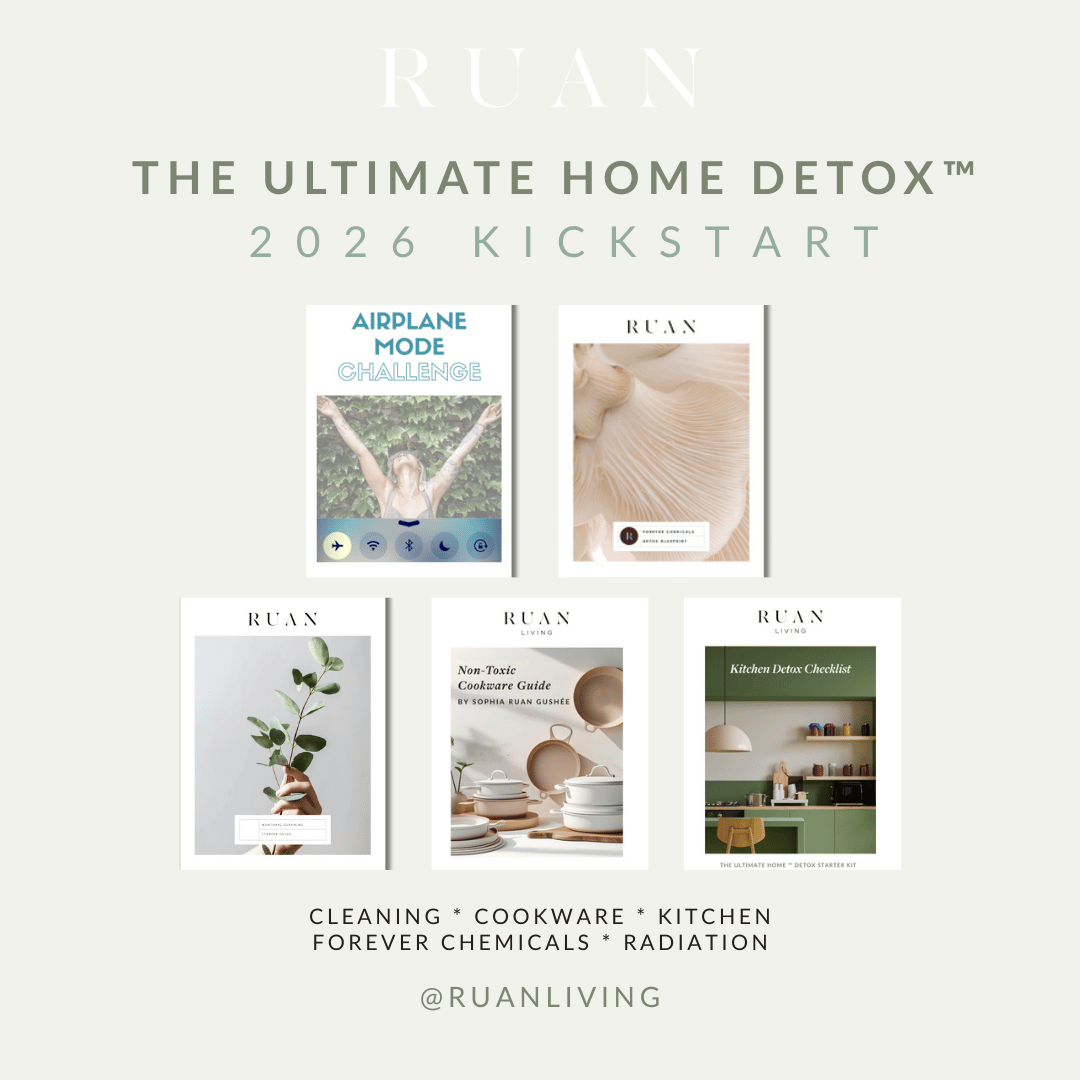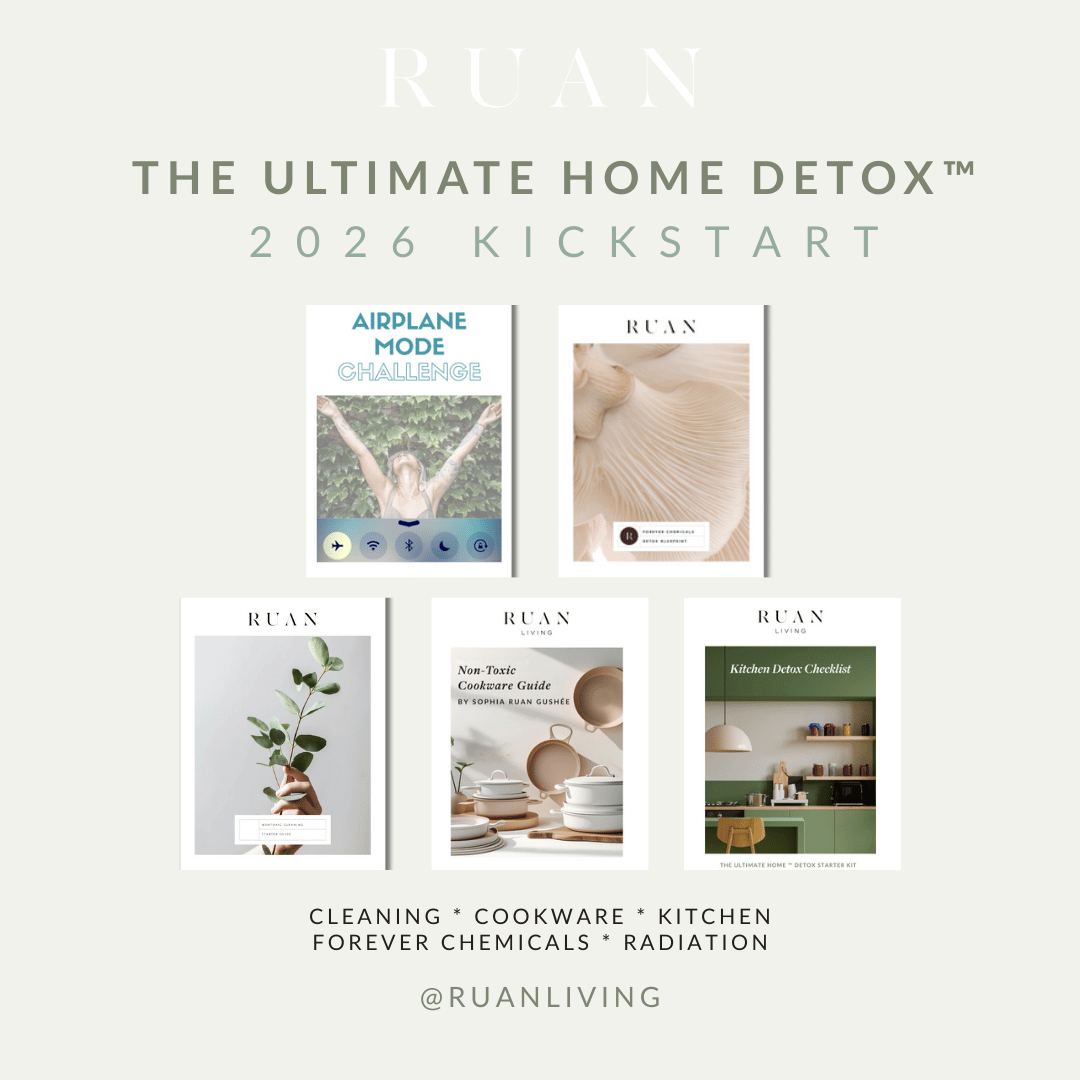
Safer Textile Materials to Detox Your Home
Nov 30, 2017by Angela Cummings and Sophia Ruan Gushée
Materials, or textiles, are everywhere. They cover (ha! pun intended) or comprise:
- furniture: mattresses, couches, chairs, seat covers
- bedding: blankets, mattress pads and sheets
- clothing, including athletic apparel
- other products made from fabric, including toys
Across the board, materials in each of the categories above can be made from synthetic or natural fibers.
So, how do you figure out which type of material is safe?
That’s the $100 question.
And to understand it best, let’s look at how synthetic and natural materials are made.
What are Synthetic Fibers?
Synthetic fibers are made from oil byproducts.
What does that really mean?
First, let’s look at the meaning of byproduct. Byproduct simply means that the product was made from another product. In this case, crude oil. When oil companies use crude oil (from the ground) to make gasoline, part of the crude oil (the part not used for gas) is used to make other items, or byproducts.(1)
Among those products are synthetic fibers that are man-made through a chemical process.
Synthetic fiber(2) materials include these popular options:
- polyester
- nylon
- acrylic
- rayon
- microfiber
What are Natural Fibers?
Natural fibers are made from natural products, or products produced from a living organism, such as a plant or animal. They don’t need to be re-formed or chemically altered in order to be used as a fiber.(3)
Natural fibers can be classified into five categories: seed fiber, phloem fiber, tendon fiber from plant stems or leaves, trunk fiber, and fruit or nut shell fiber. Examples of these fiber types are below.(4)
- Seed – cotton
- Phloem – hemp, jute
- Stem or Leaves – hemp
- Trunk – palm
- Fruit or Nut Shells - coconut
Natural fiber(5) materials include these popular options:
- cotton
- wool
- hemp
- bamboo
- linen
- silk
Is there an advantage of natural fibers over synthetic fibers?
You bet! But why?
Now that we discussed what synthetic and natural fibers are, let’ consider how they may be affecting health.
Synthetics
Synthetic materials are made of plastic.(6) When the material is burned, “severe melting and dripping occur” according to the City of Phoenix fire home safety page about flammable fabric.(7)
Plastics, and thereby fabrics that are synthetic, may be causing health conditions due to the chemicals they are made of. Let’s look at a few examples.(8)
- Rayon may contain chlorinated hydrocarbons and dioxin, which has been linked to endometriosis.(9)
- Acrylic is made from acrylonitrile, a chemical found to be a “probable human carcinogen” (cancer causing).(9.1)
- Polyester is created by reacting terephthalic acid ethylene glycol(10) which in low levels has been found to cause chronic respiratory irritation.(11)
Natural
Natural fibers on the other hand, are not made from chemicals. That alone reduces the number of chemicals. However, natural fibers may contain chemicals used by growers. The fibers are often sprayed with pesticides, herbicides, insecticides and other chemicals during the growing period.(12)
Organic natural fibers are grown without chemical treatments and are a healthier option in the natural fiber family. Due to the lack of chemicals during production, these fibers have not been linked to health conditions.
What Else Should I Consider?
Dyes
Textiles are not only made from fibers, but often times dyed with color and have finishes added to them.
For centuries textiles have been dyed to give them color and pizzazz. Today, there are two types of dyes that manufacturers use – synthetic and natural dyes. Similar to the principles of synthetic and natural fibers, synthetic dyes are an oil byproduct made from chemicals and natural dyes are made from natural materials produced by a living organism (plant or insect for example). Synthetic dyes have been linked to health conditions ranging from irritating conditions to life-threatening cancer.
As with textiles, choose textiles dyed with natural dyes instead of synthetic.
Finishes
Finishes are commonly added to textiles and help them resist water, stains, wrinkles, flames and more. We see these finishes advertised as “water resistant”, “stain resistant”, “wrinkle free”, “flame retardant” and “no iron”. While convenient, these finishes may not be so good for health. Studies show that finishes like these may be causing asthma, cancer, and other health conditions.(13)
While many products on the market today are covered in polyester and nylon synthetic materials, there are healthier cotton and wool natural materials available – and becoming more popular among consumers!
Best Options
Choose organic natural material when you can, and natural materials when organic materials aren’t available.
Ask for textiles that are colored with natural dyes and look for textiles that do not have finishes. When you see words like “stain resistant” or “wrinkle free” find an alternative fabric. And if retailers offer to add a stain resister tell them no thank you.

Membership to the D-Tox Academy will be available soon! Subscribe below to stay tuned. You'll learn practical things like how to care for natural materials, as well as specific brands I buy.
References
(1) IPRB
(2) (5) (9) (9.1) (12) A-to-Z-of-D-Toxing-Works-Cited-Part-2
(3) (4) Textile School
(6) (7) ACS
(8) (13) A-to-Z-of-D-Toxing-Works-Cited-Parts-3-and-4
(10) O Ecotextiles
(11) US EPA


